When to harvest corn: learn how to pick ripe corn every time
Want to know when to harvest corn? We've got all the tips you need to get the best results
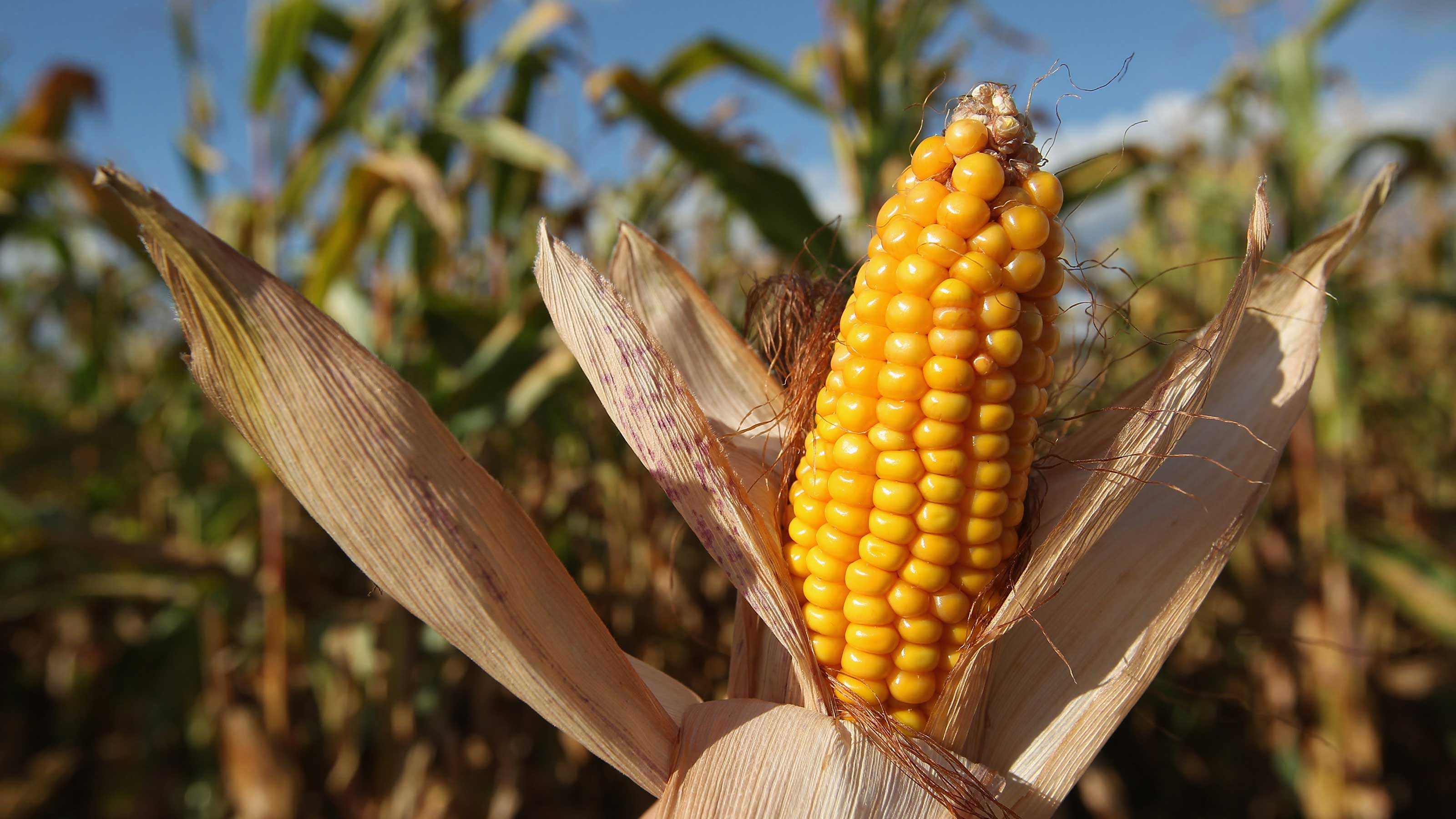

Knowing exactly when to harvest corn is a great task to add onto your summer gardening to-do list. There's nothing better than throwing some corn on the grill and munching along all summer – and it's particularly delicious when it's fresh from the backyard.
One of the things you might know if you've looked into how to grow sweet corn is that corn matures quickly, taking only a few days to go from unripe to overripe. Luckily, there are lots of ways to check your corn before harvesting, so you know you'll be getting the freshest and most tasty corn.
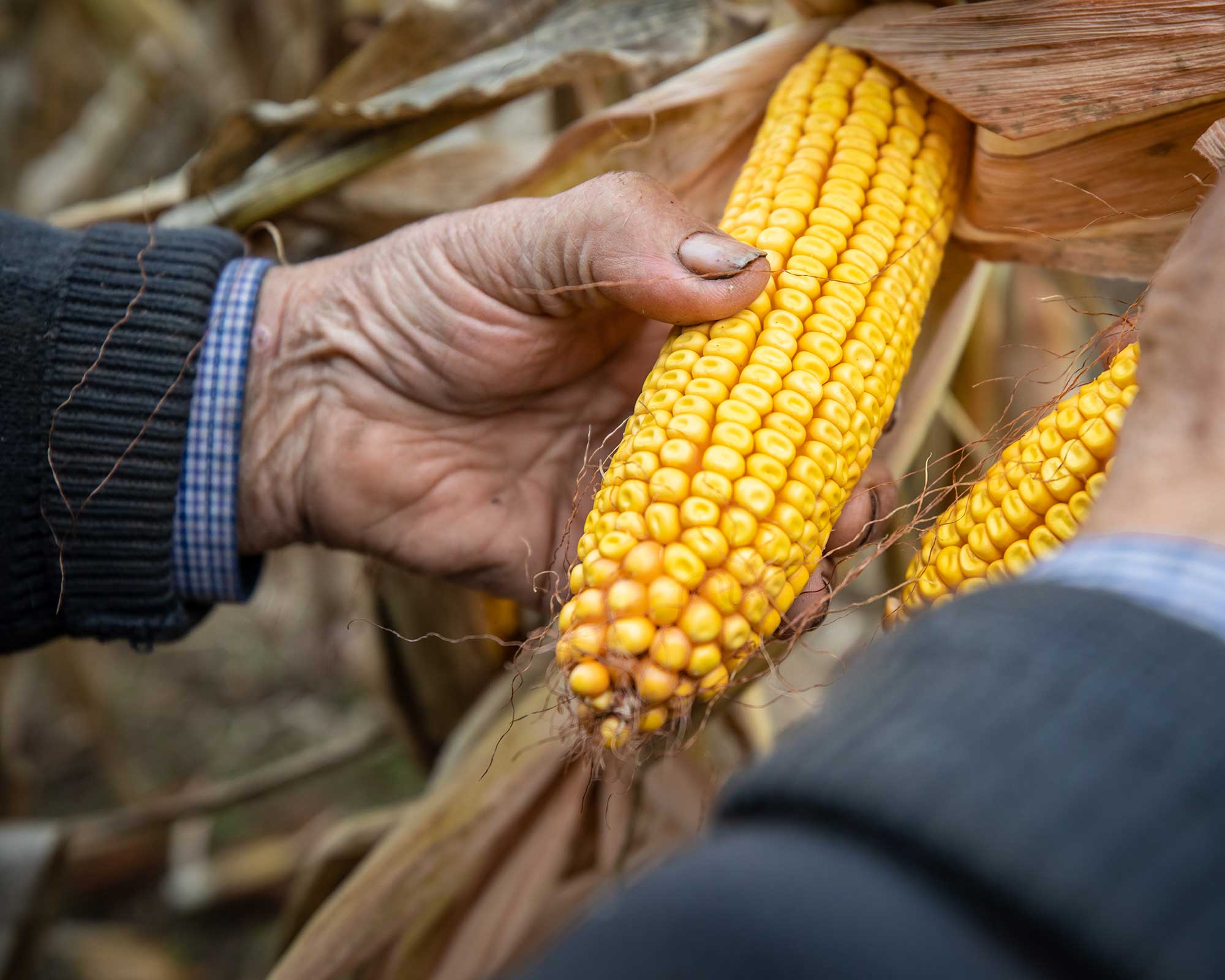
Newly picked corn will always taste the freshest
When to harvest corn for the best crops
Whether you're growing it in a raised garden bed or a small vegetable garden, knowing when to harvest corn cobs is all in the appearance. When it's growing, an ear of corn will be topped by a cluster of silky fibres that need to be pollinated. You'll know it's ripe when these silks have turned brown and begun to shrivel, but the husks are still a pale green color.
The ear will also start to angle itself away from the stalk – a sure sign of ripeness – and should feel firm and full when you hold it too.
If you're unsure, you can employ the fingernail trick to check the juice inside the kernels. 'If, when you split a kernel with your thumbnail, juice is thin and milky, the cob is ready to harvest,' says Amateur Gardening's expert John Negus. 'If the liquid is thin and watery, the fruit is not yet ripe.'
How to harvest corn in 4 easy steps
- Firmly grasp the ear of corn in one hand.
- Hold the stalk with the other hand.
- Twist the ear in a gentle motion, down and away from the stalk.
- Strip the husks and silks off the cob so it's clean.
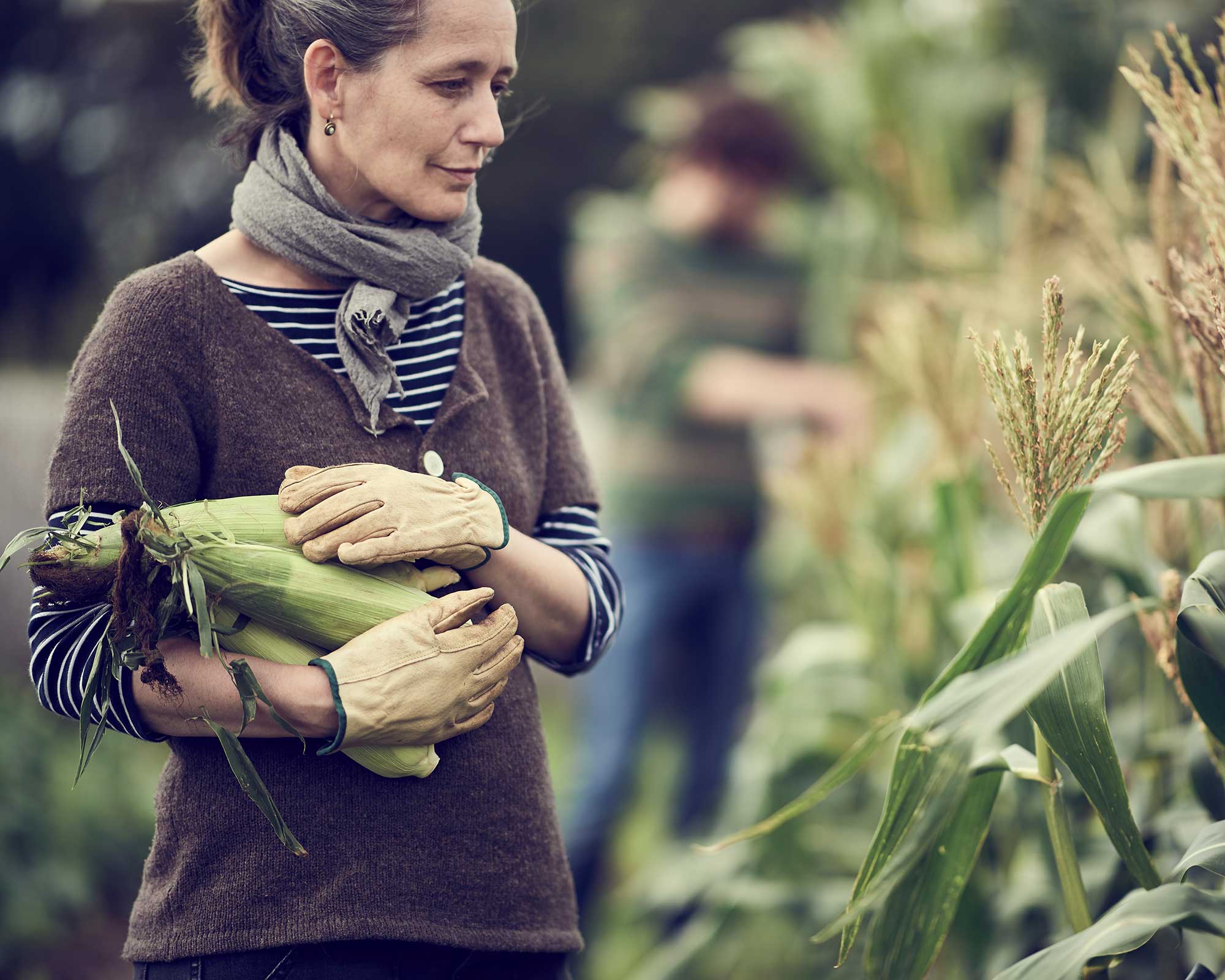
Corn should be picked when the husks are still green
How long does corn take to grow?
From planting seeds to harvest, most corn crops take between 90 and 120 days to grow. Once the corn silks have begun to appear, it's usually around 3-6 weeks for the cobs to be harvest-ready.
The RHS mentions that sweetcorn cobs start ripening from the middle of summer onwards.
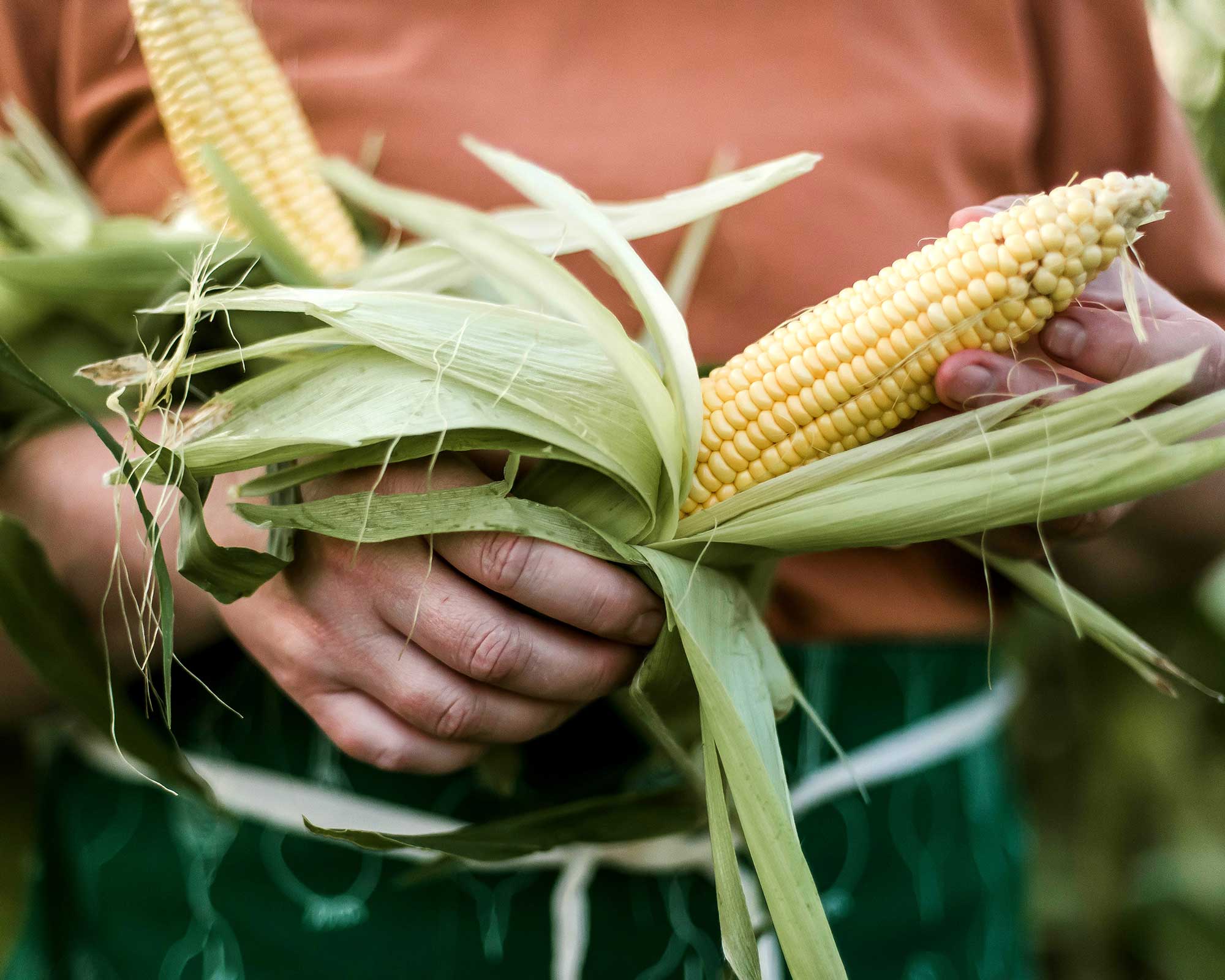
Fresh corn should feel firm to the touch
How to know if corn is unripe or overripe
Because corn ripens so quickly, there's a small window to catch the kernels at their best.
We recommend relying on the fingernail trick again. If you see a watery liquid, the corn is not yet ripe – so it's best to check again in a couple of days.
However, once the liquid has turned opaque and seems more like a paste it might be overripe and need to be discarded. 'If it resembles clotted cream, it is past its best and sugars within the kernels have been converted to starch,' explains John Negus.
You should eat fresh corn as quickly as possible once it's been harvested from your kitchen garden, ideally within a couple of days. It loses its freshness quickly as the sugars begin to convert into starch, and it won't taste particularly good!
How and when to harvest corn for decorations
Colorful ears of shiny ornamental corn are a hugely popular part of fall decor when decorating your home, both inside and out. To incorporate corn into your fall front porch ideas, you first need to know how to dry and preserve it.
Instead of harvesting your corn when the husks are still green, wait a while until they're drying out a little and the corn kernels have begun to glaze over. The moisture will have dropped significantly, making these ears of corn easier to preserve.
Tie a few ears of corn together and hang them somewhere warm so they can dry out completely – this should take around a fortnight.
You'll know they're totally dry when poking a kernel with a fingernail doesn't make any dent.
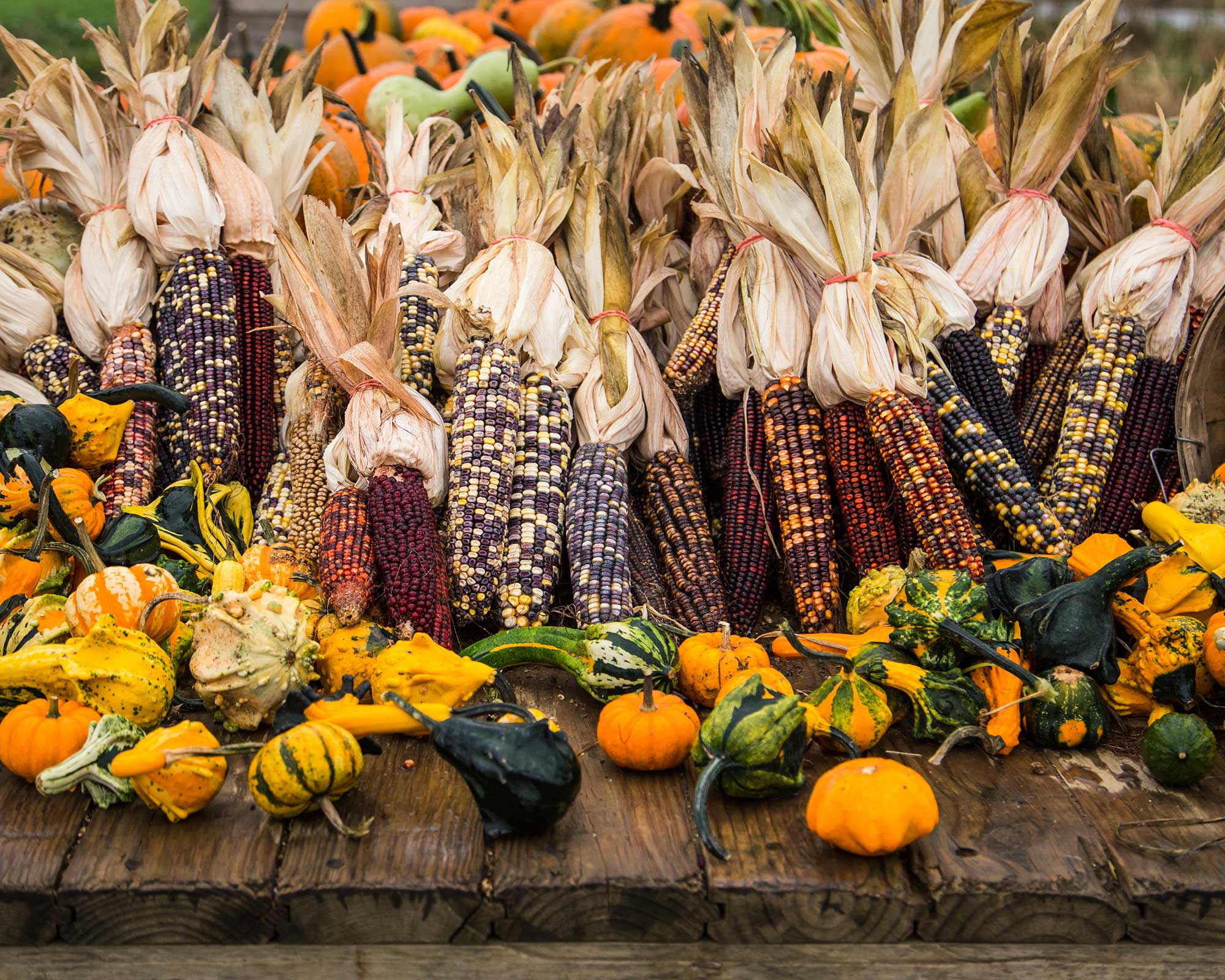
Decorative corn is a perfect addition to your fall decor

Freelance writer and author Flora Baker is a keen amateur gardener and houseplant enthusiast. Her small garden in South London is a constant work in progress as she gets to grips with snail prevention, DIY trellises and what to plant in shady spots overrun with ivy.
